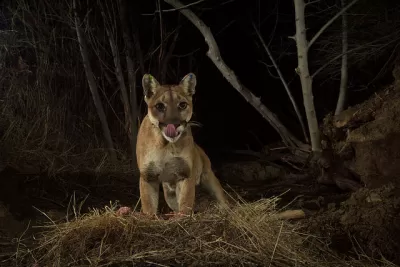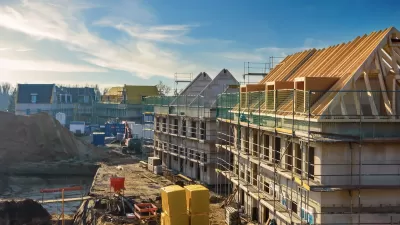Encouraging denser development in urbanized areas is an effective way to protect sensitive flora and fauna from human encroachment.

Protecting sensitive wildlife and building more housing don't have to be mutually exclusive, argues J.P. Rose, senior attorney at the Center for Biological Diversity. "For decades we have built in areas without careful consideration of how it affects wildlife. Sprawling overdevelopment has helped bring us to this extinction crisis — one in which the Quino checkerspot butterflies that once thrived in Southern California are now extremely rare and iconic mountain lions are suffering from inbreeding and genetic isolation."
But protecting wildlife doesn't have to come at the expense of affordable housing, a point brought into sharp relief in February, when the Northern California town of Woodside attempted to evade state housing mandates by designating the entire community as mountain lion habitat.
When my colleagues at the Center for Biological Diversity and I petitioned the California Fish and Game Commission to list Southern California and Central Coast mountain lions as a threatened species, we were not proposing to ban development throughout the state.
Instead, we wanted state officials to help these imperiled cats by building wildlife crossings, prohibiting rat poison use and factoring in how new development affects connectivity.
As Rose writes, the solution is infill development. "It’s time to stop seeing large swaths of open space as the best places to build. Cities and counties must steer development toward jobs and transportation centers to address the need for affordable housing. Focusing on wildlife-friendly infill development and building up, not out, is the thoughtful way to grow."
"In Ventura County, the board of supervisors passed two ordinances that increase protections for wildlife corridors by setting development standards and requiring environmental review for projects that block connectivity." Rose praises these ordinances, saying he hopes that similar policies will follow in more communities.
FULL STORY: Guest column: California has room for mountain lions and affordable housing

Planetizen Federal Action Tracker
A weekly monitor of how Trump’s orders and actions are impacting planners and planning in America.

Map: Where Senate Republicans Want to Sell Your Public Lands
For public land advocates, the Senate Republicans’ proposal to sell millions of acres of public land in the West is “the biggest fight of their careers.”

Restaurant Patios Were a Pandemic Win — Why Were They so Hard to Keep?
Social distancing requirements and changes in travel patterns prompted cities to pilot new uses for street and sidewalk space. Then it got complicated.

Platform Pilsner: Vancouver Transit Agency Releases... a Beer?
TransLink will receive a portion of every sale of the four-pack.

Toronto Weighs Cheaper Transit, Parking Hikes for Major Events
Special event rates would take effect during large festivals, sports games and concerts to ‘discourage driving, manage congestion and free up space for transit.”

Berlin to Consider Car-Free Zone Larger Than Manhattan
The area bound by the 22-mile Ringbahn would still allow 12 uses of a private automobile per year per person, and several other exemptions.
Urban Design for Planners 1: Software Tools
This six-course series explores essential urban design concepts using open source software and equips planners with the tools they need to participate fully in the urban design process.
Planning for Universal Design
Learn the tools for implementing Universal Design in planning regulations.
Heyer Gruel & Associates PA
JM Goldson LLC
Custer County Colorado
City of Camden Redevelopment Agency
City of Astoria
Transportation Research & Education Center (TREC) at Portland State University
Camden Redevelopment Agency
City of Claremont
Municipality of Princeton (NJ)





























